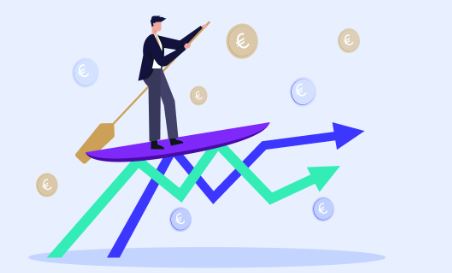“Surviving the Economic Downturn: Key Insights and Practical Advice for Weathering a Recession”
– By: Sheeren Gul
A recession is a significant and prolonged economic slump, marked by a widespread decline in economic activity. While a common indicator is two consecutive quarters of negative GDP growth, the reality is more complex. Economists at the National Bureau of Economic Research (NBER) use a multifaceted approach, examining key indicators such as nonfarm payrolls, industrial production, and retail sales to determine if a recession is underway.
But here’s the thing: there’s no one-size-fits-all formula to define a recession. NBER economists consider a range of factors, weighing their importance on a case-by-case basis. To qualify as a recession, a downturn must be deep, pervasive, and lasting. And here’s the catch: these qualities may not be immediately apparent when a downturn begins, which is why many recessions are only officially declared retroactively.
In short, recessions are complex economic events that require careful analysis and consideration. By understanding what constitutes a recession, we can better navigate the ups and downs of the economic cycle.
Surviving the Economic Downturn: Key Insights and Practical Advice for Weathering a Recession
In times of economic turbulence, the world often seems like a ship navigating through a stormy sea. Recessions, those dreaded downturns in economic activity, can leave individuals and businesses feeling adrift, uncertain of how to navigate the choppy waters ahead. Yet, amidst the chaos, there are lessons to be learned and strategies to employ that can help not only weather the storm but emerge stronger on the other side.
To understand the nature of a recession, we must delve into economic theory. One prominent theory, the Keynesian perspective, posits that recessions are caused by a shortfall in aggregate demand. When consumers and businesses cut back on spending, it leads to a decline in production, investment, and ultimately, economic output. This theory highlights the importance of government intervention through fiscal policy, such as increased government spending or tax cuts, to stimulate demand and jumpstart economic growth.
Another theory, the monetarist perspective, emphasizes the role of monetary policy in influencing economic activity. According to monetarist economists like Milton Friedman, recessions are primarily the result of fluctuations in the money supply and the actions of central banks. By controlling interest rates and the money supply, central banks can influence borrowing and spending decisions, thereby impacting overall economic activity.
In today’s globalized world, recessions are often triggered by a combination of factors, both domestic and international. Trade tensions between major economies, such as the United States and China, can disrupt supply chains and dampen global trade, leading to a slowdown in economic growth. Technological disruptions, such as automation and artificial intelligence, have also contributed to structural changes in the labor market, exacerbating income inequality and job displacement.
The COVID-19 pandemic, arguably the most significant global crisis of our time, has further highlighted the interconnectedness of the global economy and the vulnerabilities inherent in our systems. The pandemic-induced recession has led to widespread job losses, business closures, and disruptions to supply chains, causing economic hardship for millions around the world.
So, how can individuals and businesses navigate these uncertain times and emerge stronger on the other side? One key insight is the importance of financial resilience. Building a strong financial foundation, including maintaining an emergency fund and reducing debt, can provide a buffer against economic shocks and ensure stability during periods of uncertainty.
Diversification, both in terms of income streams and investments, is another essential strategy for weathering a recession. By spreading risk across different assets and revenue sources, individuals and businesses can mitigate the impact of downturns in specific sectors or markets.
Adaptability and innovation are also critical during times of economic upheaval. Businesses that are agile and willing to embrace change are better positioned to navigate shifting consumer preferences and market dynamics. This may involve exploring new revenue streams, adopting new technologies, or reimagining business models to stay competitive in a rapidly evolving landscape.
Investing in talent development and up skilling is another valuable strategy for both individuals and organizations. By enhancing skills and capabilities, individuals can improve their employability and resilience in the job market, while businesses can cultivate a skilled workforce capable of driving innovation and adaptation.
In addition to these proactive strategies, it’s essential to maintain a positive mindset and seek support from peers, mentors, and advisors. By staying informed about economic trends and market developments, individuals and businesses can make informed decisions and adapt their strategies accordingly.
Ultimately, surviving a recession requires a combination of foresight, resilience, and adaptability. By understanding the underlying causes of economic downturns, implementing proactive strategies, and maintaining a positive outlook, individuals and businesses can not only weather the storm but emerge stronger and more resilient than ever before. As the old adage goes, “Smooth seas do not make skillful sailors.” It is during times of adversity that we have the opportunity to grow, innovate, and thrive.




